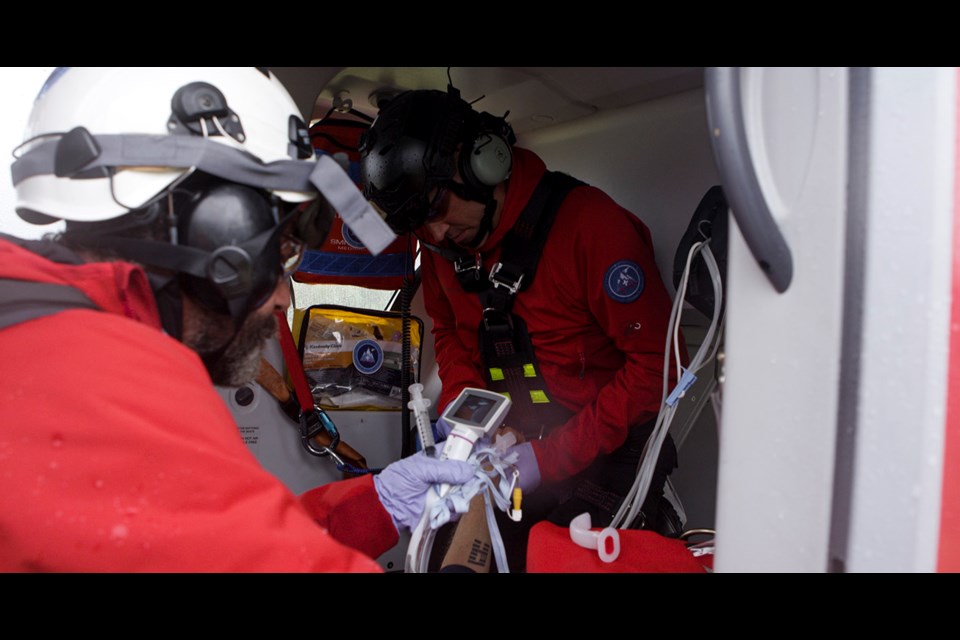They will fly in to help those in serious medical trouble in remote areas.
A group of Squamish-based paramedics, doctors and rescue professionals is banding together to form a new organization that will bring advanced life support to the Sea to Sky Corridor, by helicopter.
The brainchild of Squamish paramedic Miles Randell, the not-for-profit society TEAAM Aeromedical officially launches Aug. 30.
The organization will be a first for Canada, Randell told The Chief.
“We are modeled after a European and Australian model,” he said, adding he travelled to Switzerland to see how that country’s cutting edge alpine helicopter emergency medical services teams work and has learned from Australian experts how their teams operate.
Collaborating with Blackcomb Helicopters, the aim of the Squamish group is to use a helicopter to access ill or injured patients at industrial worksites, forestry operations, remote First Nations communities and marine environments by “hoisting an advanced life support practitioner down to the patient, rapidly treating with ALS care, and then hoisting the patient into the aircraft for transport,” Randell explained recently in a letter to Squamish council.
Advanced life support requires extra training and is a more complex level of medical care, such as helping an ill patient by opening up their airways or promoting blood circulation in emergency situations.
A report released in February by BC Forest Safety Ombudsman Roger Harris called for the type of service the Squamish group aims to provide.
Will It Be There – A Report on Helicopter Emergency Medical Services in BC highlights gaps in the ability to have critically ill or injured workers in remote areas transported out for medical treatment.
One of Harris’ recommendations in the report is to “expand the use of hoisting to reduce time to extract and transfer patients to medical facilities.”
Randell said members of his group have been working closely with Harris on their plan for the Sea to Sky.
Currently, members of the BC Ambulance Service are not trained or equipped to work in remote settings and can only provide advanced life saving care by air ambulances that are based out of Vancouver. Squamish Search and Rescue members are not mandated to provide advanced life support, said Randell, who has volunteered with Squamish Search and Rescue and North Shore Search and Rescue.
Currently, if someone is sick or injured at a remote worksite such as the Ashlu Creek run-of-river hydroelectric power generating plant, for example, the incident would be called in to 911.
Because there is no area around the plant for air ambulance to land, it would take about two hours for an ambulance to drive up and assist the patient, Randell said.
By that time, the patient’s chances of survival are drastically reduced, he added.
TEAAM members did a recent practice rescue exercise at the plant and it took seven minutes by helicopter for them to arrive.
Randell, who is an advanced life support paramedic himself, was hoisted down and simulated lifesaving treatment. The patient would then be hoisted back up to the helicopter and, after a seven-minute return flight, taken to hospital.
TEAAM will be funded primarily by industry, Randell said.
For more on the organization go to www.teaam.ca.




